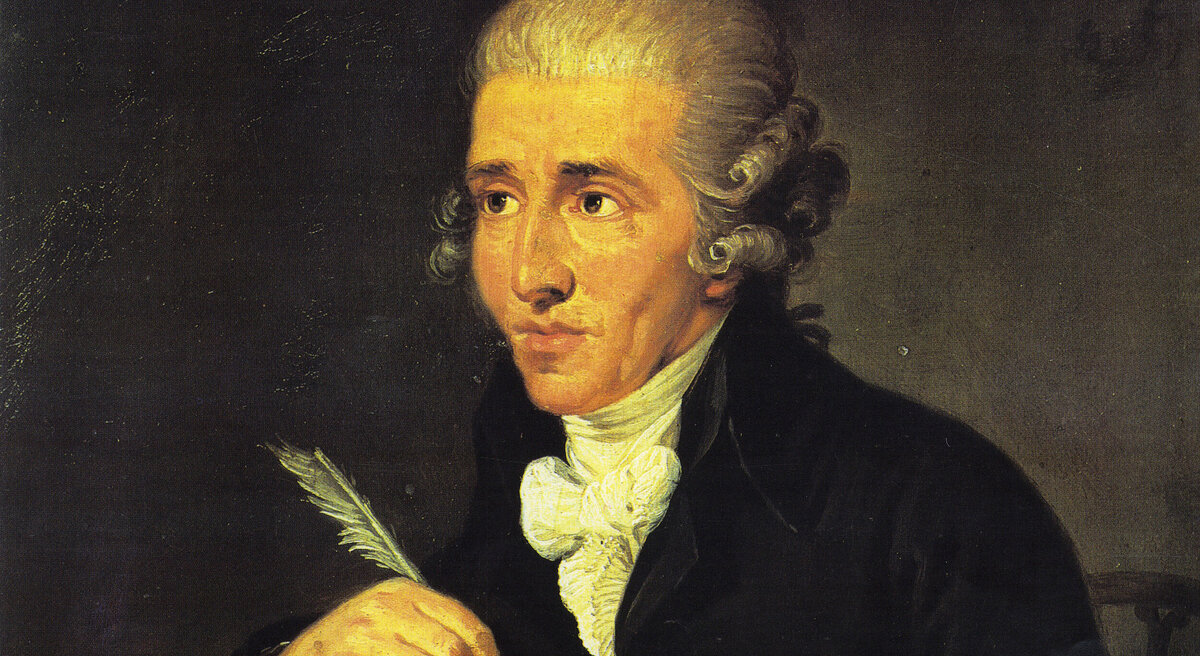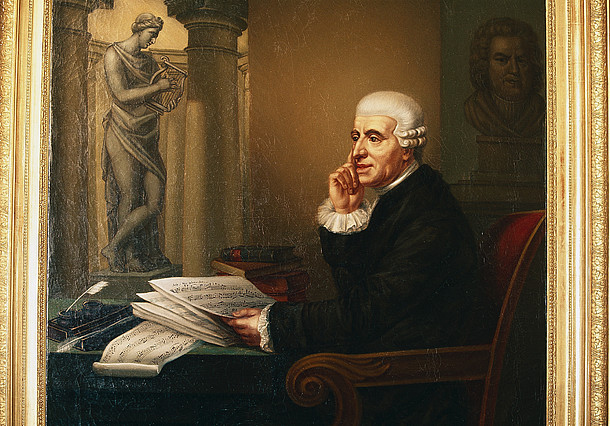
In the annals of classical music, few names resonate with the enduring legacy and sheer prolific output of Joseph Haydn. Revered as the “Father of the Symphony” and “Father of the String Quartet,” his compositions laid much of the groundwork for the Classical style, influencing generations of musicians, including his illustrious friend, Wolfgang Amadeus Mozart, and his eventual student, Ludwig van Beethoven.
Yet, behind the grand orchestras and timeless melodies lies a deeply human story—a narrative of remarkable talent forged in hardship, relentless self-improvement, and an unwavering spirit. This isn’t just a tale of musical genius; it’s a poignant exploration of resilience, ambition, and the personal sacrifices made on the path to becoming one of history’s most beloved composers. We often hear the finished symphonies, but what about the man who brought them to life? What trials did he face, and what personal moments shaped his extraordinary journey?
Join us as we pull back the curtain on the life of Joseph Haydn, uncovering the lesser-known struggles and triumphs that paved the way for his iconic status. From a small Austrian village to the grand concert halls of Europe, his story is a powerful reminder that even the most celebrated figures often walk a challenging, deeply personal road.

1. **Humble Beginnings and the Spark of Musical Genius**Joseph Haydn’s journey began in Rohrau, Austria, a modest village nestled on the border with Hungary. Born to Mathias Haydn, a wheelwright who also served as the local marketplace supervisor, and Maria, née Koller, a former cook, his origins were far from aristocratic. Neither of his parents could read music, a fact that makes his later achievements all the more remarkable. However, his father, Mathias, was an enthusiastic folk musician who had taught himself to play the harp during his journeyman period.
This familial passion for music cultivated an environment where talent could flourish. According to Haydn’s own later reminiscences, his family was “extremely musical,” and they would frequently sing together, often joined by their neighbors. This early exposure to music, woven into the fabric of his everyday life, ignited a spark within young Joseph, a spark his parents were quick to notice.
His parents, recognizing their son’s exceptional musical gifts, understood that Rohrau simply couldn’t offer the serious training he deserved. This realization led to a pivotal decision that would forever alter the course of his life, demonstrating their profound commitment to nurturing his budding talent despite their own limitations and humble circumstances.

2. **Apprenticeship in Hainburg: Hardship and Rapid Progress**Around the tender age of six, Joseph’s parents accepted a proposal that would change everything. Their relative, Johann Matthias Frankh, the schoolmaster and choirmaster in nearby Hainburg, offered to apprentice Haydn in his home, providing him with formal musical training. This meant leaving his family home, a separation that would prove permanent; Haydn “never again lived with his parents.”
Life in the Frankh household, however, was far from idyllic. Haydn later vividly recalled the difficulties, remembering “being frequently hungry and humiliated by the filthy state of his clothing.” These were harsh conditions for a young boy, a stark contrast to the warmth of his musical family home, yet they did not deter his inherent drive and talent. Despite the privations, Haydn absorbed every lesson with remarkable speed.
He “quickly profited from his musical training,” mastering both the harpsichord and violin in short order. Beyond instrumental proficiency, he also sang treble parts in the church choir, his voice surely blossoming under the guidance of Frankh. This period, marked by personal hardship, was undeniably crucial in laying the technical foundation for his future as a versatile and accomplished musician.

3. **Chorister at St. Stephen’s: A Double-Edged Sword of Opportunity**Haydn’s exceptional singing voice soon garnered attention beyond Hainburg. In 1739, Georg Reutter the Younger, the esteemed director of music in St. Stephen’s Cathedral in Vienna, visited Hainburg in search of new choirboys. Impressed by what he heard, Reutter offered Haydn an audition, which he passed with flying colors. After several months of additional training, Haydn moved to Vienna in 1740, embarking on a nine-year tenure as a chorister in one of Europe’s leading musical centers.
Living in the Kapellhaus next to the cathedral, alongside Reutter’s family and the other choirboys (including his younger brother Michael after 1745), Haydn received a broad education. He was instructed in Latin and other academic subjects, as well as voice, violin, and keyboard. This immersion in a professional musical environment was invaluable, allowing him to learn a great deal simply “by serving as a professional musician there.”
Despite the prestigious setting, Reutter offered little direct guidance in music theory and composition, providing Haydn with only two lessons throughout his entire time as a chorister. Moreover, the struggles with adequate nourishment continued. Haydn later confided to his biographer, Albert Christoph Dies, that he was often motivated to “sing well, in hopes of gaining more invitations to perform before aristocratic audiences, where the singers were usually served refreshments.” This revealing detail highlights the persistent personal challenges beneath the surface of his musical development.

4. **Dismissal and the Unforeseen Dawn of Freelancing**By 1749, Haydn’s voice had undergone a natural transformation; he had “matured physically to the point that he was no longer able to sing high choral parts.” This biological reality eventually led to a rather blunt assessment from none other than Empress Maria Theresa herself, who complained to Reutter about his singing, famously calling it “crowing.” It was clear his time as a boy chorister was drawing to a close.
However, it was a mischievous prank, not his changing voice, that sealed his fate. One day, Haydn, perhaps feeling the pressures of his position or simply being a playful youth, “snipp[ed] off the pigtail of a fellow chorister.” This act of defiance was the final straw for Reutter. Haydn was swiftly punished, first caned, then “summarily dismissed and sent into the streets.”
Suddenly adrift and without employment or family, it was a moment of profound uncertainty. Fortunately, he was taken in by a friend, Johann Michael Spangler, who generously “shared his family’s crowded garret room with Haydn for a few months.” This unexpected turn of events, though initially dire, became the catalyst for Haydn to immediately “begin his pursuit of a career as a freelance musician,” marking a dramatic and pivotal shift in his life’s trajectory.

5. **Struggles, Self-Education, and the Seeds of Mastery**Life as a freelance musician in Vienna was an immediate struggle for the young Haydn. He found himself working “at many different jobs,” testament to his determination to survive and pursue his passion. These included stints as a music teacher, a street serenader, and eventually, in 1752, as a valet-accompanist for the renowned Italian composer Nicola Porpora. It was from Porpora that Haydn later credited learning “the true fundamentals of composition,” an invaluable mentorship during a period of intense personal and professional growth.
Critically, during his chorister years, Haydn had not received “any systematic training in music theory and composition.” Recognizing this gap in his education, he embarked on a rigorous program of self-study. He meticulously worked “his way through the counterpoint exercises in the text Gradus ad Parnassum by Johann Joseph Fux” and devoted himself to studying the works of Carl Philipp Emanuel Bach.
Haydn’s admiration for C.P.E. Bach was profound. He once declared of Bach’s first six keyboard sonatas, “I did not leave my clavier till I played them through, and whoever knows me thoroughly must discover that I owe a great deal to Emanuel Bach, that I understood him and have studied him with diligence.” This self-driven pursuit of knowledge, combined with his diverse performing experiences, laid the essential groundwork for his compositional voice and future mastery.

6. **Emerging Reputation and the First Glimmers of Patronage**As Haydn’s skills deepened and his unique compositional voice began to emerge, he slowly but surely started to acquire a public reputation. His first significant recognition came as the composer of an opera, *Der krumme Teufel* (The Limping Devil), written for the comic actor Joseph Felix von Kurz. The opera premiered successfully in 1753, a promising start, though it was “soon closed down by the censors due to ‘offensive remarks,'” a reminder of the often-unpredictable nature of public life.
During this time, Haydn also observed, seemingly without annoyance, that works he had “simply given away were being published and sold in local music shops.” This phenomenon, while not directly profitable for him at the time, was an undeniable sign of his growing popularity and the public’s appetite for his music. Between 1754 and 1756, he also worked freelance for the Viennese court, serving as a supplementary musician for imperial balls and as a singer in the imperial chapel, further broadening his experience and exposure.
Crucially, with this increase in reputation, Haydn eventually secured the aristocratic patronage so vital for a composer’s career in his era. Countess Thun, impressed by one of his compositions, summoned him and engaged him as her singing and keyboard teacher. Following this, in 1756, Baron Carl Josef Fürnberg employed Haydn at his country estate, Weinzierl, where the composer penned his first string quartets. The enthusiastic reception of these quartets spurred him to create more. Fürnberg’s eventual recommendation to Count Morzin led to Haydn’s first full-time employment as Kapellmeister in 1757, a crucial turning point that offered stability and a dedicated platform for his burgeoning genius.




